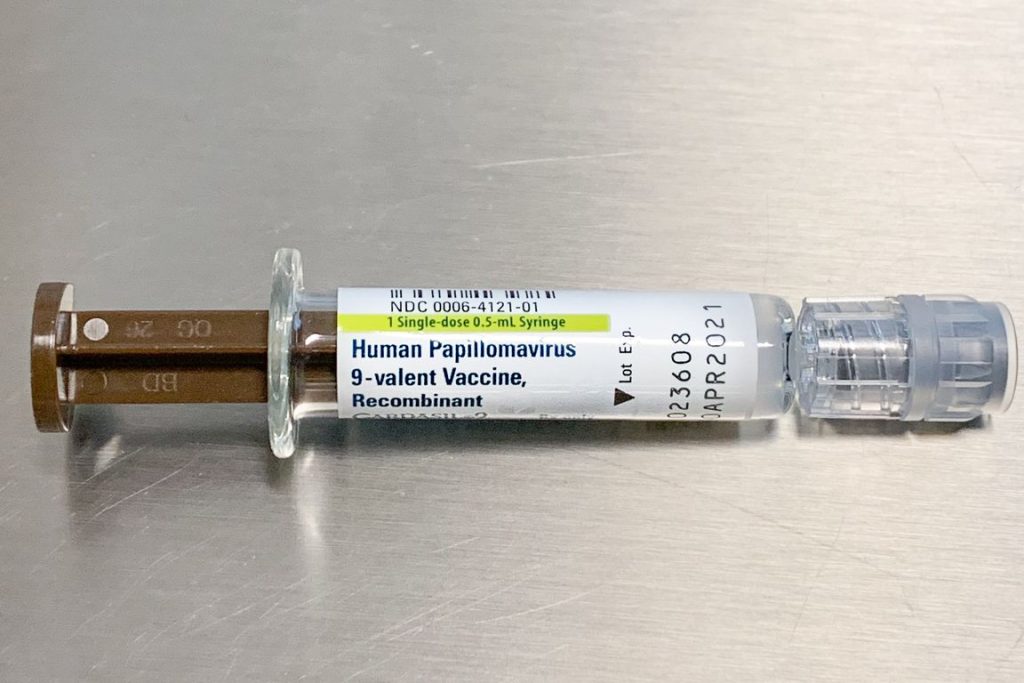
In December 2014, the FDA approved the 9-valent HPV vaccine (also known as Gardasil 9). This vaccine protects against 9 strains of HPV: the four strains approved in the previous Gardasil quadrivalent vaccine, as well as 31, 33, 45, 52, and 58. (Gardasil quadrivalent vaccine is no longer distributed in the US.)
The Centers for Disease Control (CDC) approved the HPV vaccine for girls in 2006 and for boys in 2009. Gardasil 9 by Merck is the current HPV vaccine protecting against nine HPV types.
Recommendations
CDC recommends that 11- to 12-year-old boys and girls receive two doses of HPV vaccine 6 to 12 months apart. The vaccine is most effective prior to HPV exposure; in other words, before a person becomes sexually active. Learn more.
- The first dose is routinely recommended at ages 11–12 years old. The vaccination can be started at age 9 years.
- Only two doses are needed if the first dose was given before 15th birthday.
- Teens and young adults who start the series later, at ages 15 through 26 years, need three doses of HPV vaccine.
- Children aged 9 through 14 years who have received two doses of HPV vaccine less than 5 months apart will need a third dose.
- Three doses are also recommended for people aged 9 through 26 years who have weakened immune systems.
- Some adults age 27 through 45 years who are not already vaccinated may decide to get HPV vaccine after speaking with their doctor about their risk for new HPV infections and the possible benefits of vaccination for them
- HPV vaccination in this age range provides less benefit, because more people in this age range have already been exposed to HPV.
• The Advisory Committee on Immunization Practices (ACIP) also recommends HPV vaccinations for those up to age 26 who have not been fully vaccinated when younger.
• In 2018, the FDA also approved the HPV vaccine for individuals 27 to 45 years old. Even if someone has already had sex, the HPV vaccine can protect against cancer. That’s because while one’s first HPV infection usually occurs during the first few times he/she has sex, a person may not have been exposed to all HPV strains. The HPV vaccine protects against nine types of HPV. However, vaccination is not recommended for everyone older than age 26 years. Talk to your doctor. Learn more.
Safety, Side Effects & Effectiveness
Prior to the FDA’s approval of Gardasil 9, the vaccine underwent multiple studies, evaluating its safety in more than 15-thousand males and females. The findings found Gardasil 9 is safe and effective. The most commonly reported adverse reactions were injection site pain, swelling, redness and headaches. On rare occasions, fainting occurred after receiving the HPV vaccine. This also occurs with other types of approved vaccines.
REACHING 80% VACCINATION BY 2026
HPVANDME is a member of the American Cancer Society’s California HPV Roundtable, working to increase vaccination rates in CA. Doctors we have spoken with agree that if we can greatly increase vaccination rates among adolescents, we can nearly eliminate HPV-related cancers in a few generations.
In 2017, the CDC says roughly half, or 49 percent of adolescents had received the proper doses of the HPV vaccine. Furthermore, fewer adolescents in rural areas, compared to those in urban areas, are vaccinated.
VIDEO | PREVENTION: THE HPV VACCINE
NOTE: Unless attributed to a doctor or medical organization, all views on HPVANDME.ORG are published from personal experience only and not intended to be any form of medical advice.
Always consult your doctor.

